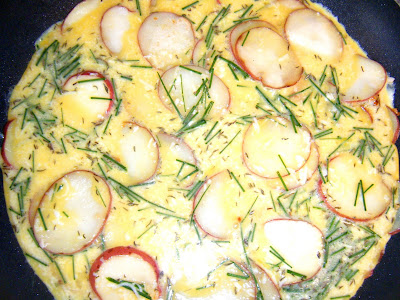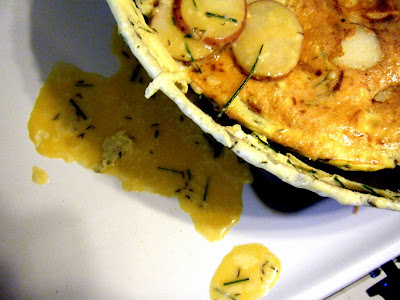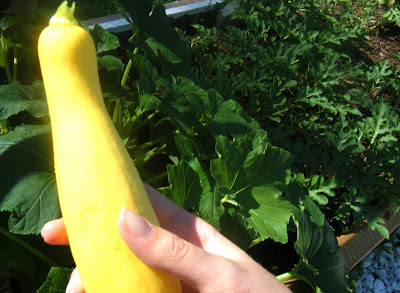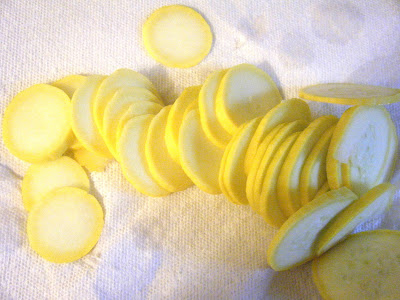You know that annoying tall grassy stuff that pops up in clumps in yards at this time of year?

It's wild garlic. And it's safe to eat. At least, in my yard it is, because I've lived in my house for more than two years, and in all that time, I've never once sprayed any herbicides around to try to kill it. There's a better way to deal with it, if you don't like the way it looks.

You can use wild garlic greens as a seasoning in many of the same sorts of dishes where you would ordinarily use cultivated cloves of garlic from your garden or the grocery store. It has a sharp, green-tinged garlic flavor that mellows during cooking. (If you'd like, you can also dig up and eat wild garlic bulbs, but they tend to be much smaller than the kind you can buy in the store. I prefer to cut the greens off and allow the bulbs to stay in the ground and make more fresh wild garlic greens for me next year.)
Here is what I did tonight with my wild garlic greens:
Spanish Tortilla with Wild Garlic
Spanish Tortilla purists will, of course, be annoyed with this recipe, as it adds cheese, and substitutes wild garlic and diced garlic cloves for the customary onion. But hey — I was out of onions. And I like cheese.
Ingredients:Six to eight b-sized red potatoes, scrubbed
Six eggs
Hard, white cheese, like parmesan or asiago, shredded
1-2 tbsp olive oil
1 tsp salt
1 tsp Black pepper
Pinch white pepper
1 tbsp dried thyme
Diced garlic (clove)
Fresh wild garlic greens
Slice the potatoes into thin rounds, leaving the skin on. Pour 1-2 tbsp olive oil into heated heavy skillet. Add 1 tbsp diced garlic, salt and black pepper, and stir for two minute. Add sliced potatoes and cook over medium heat for 20 minutes, or until translucent but not browned.

While potatoes are cooking, chop garlic greens into 1/4 inch pieces. Beat eggs in a medium bowl until yolks and whites are thoroughly mixed. Stir in garlic greens, thyme, white pepper, and some cheese. How much cheese? As much as you want. How am I supposed to know how much cheese you want?
When the potatoes are tender, pour the egg mixture into the skillet, spreading the potatoes evenly across the pan. Turn the heat down to medium-low and cook, without stirring, until the bottom and edges of the tortilla are cooked and the middle beings to solidify.

At this point you are supposed to use a fancy
vuelvetortillas to
flip the tortilla over and slide it back in the pan, cooked side up. But I am cheap and have a small kitchen that does not have room for lots of different specialized tools, so I use a pizza pan.
(Try not to spill egg all over your stove, like this.)

When the tortilla is cooked through, sprinkle some cheese on top, and add some leaves of wild garlic for a garnish.

Cut into wedges (a pizza cutter works well). Serves 2-4.


















